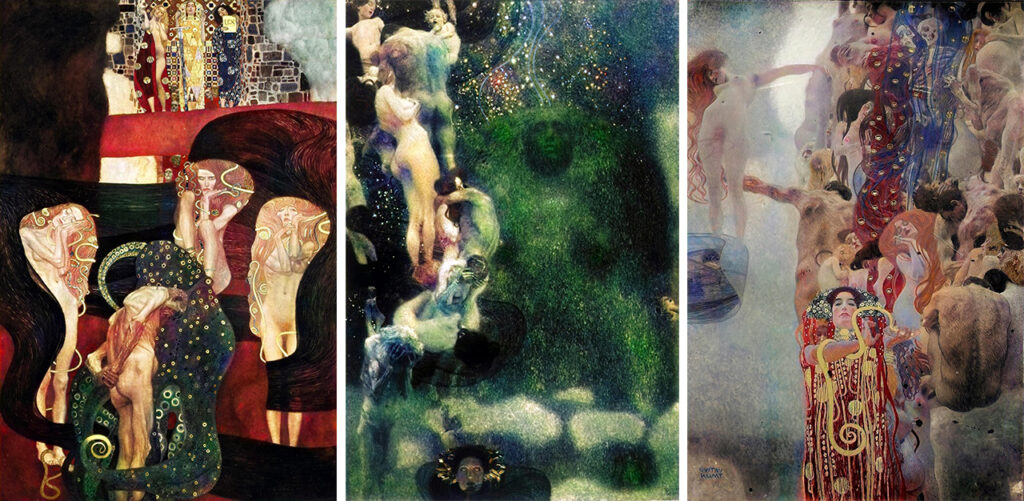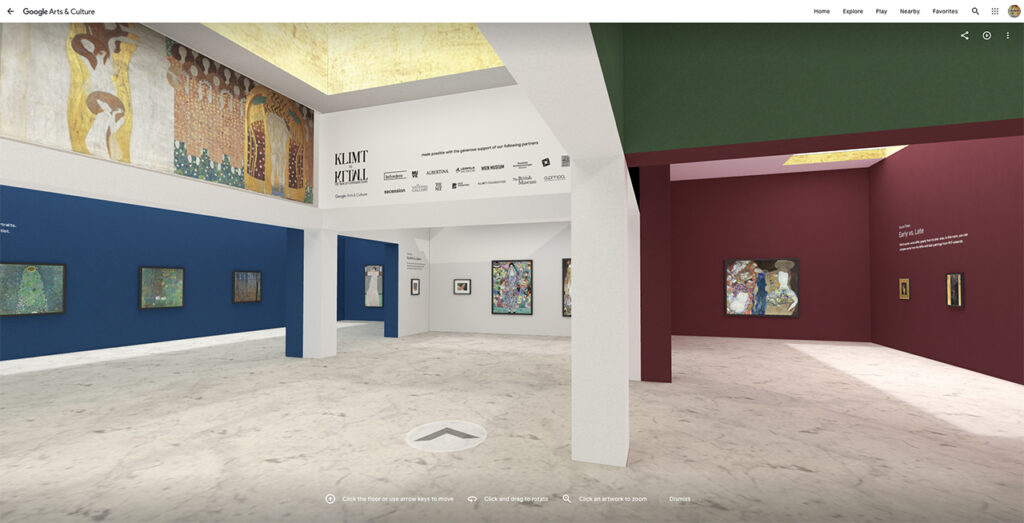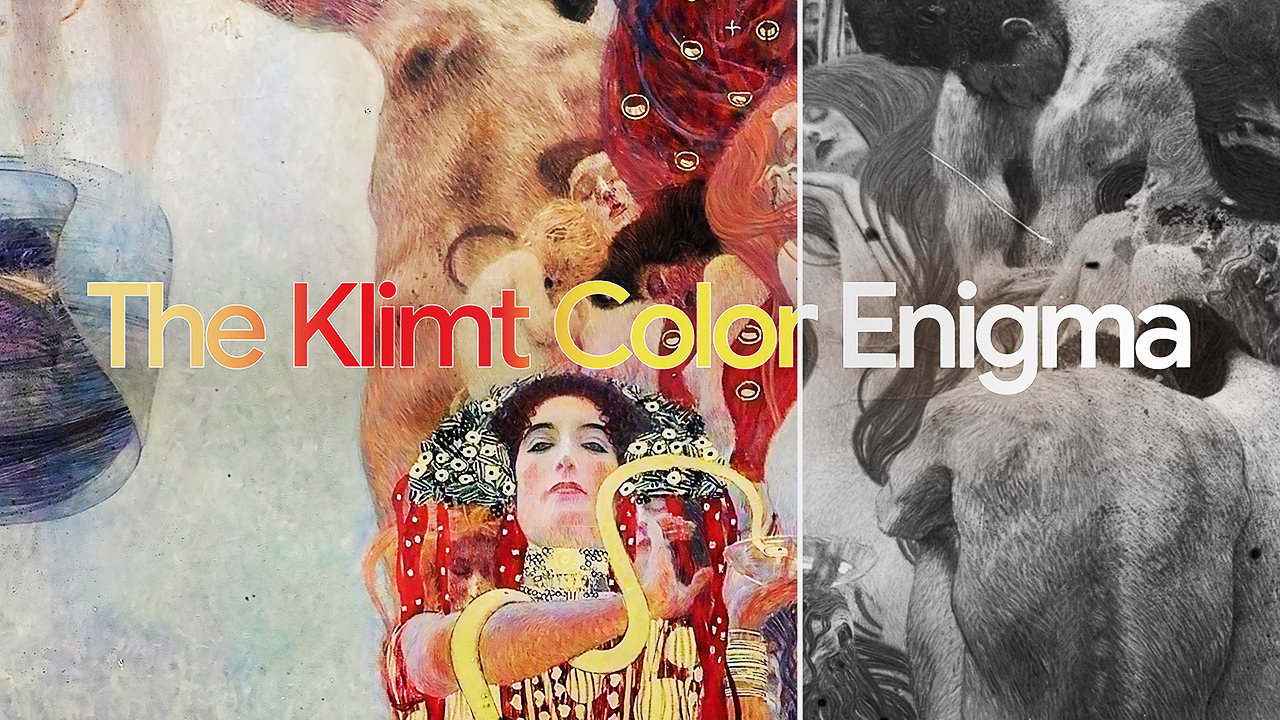In 1894, when the art committee of Austria’s Ministry of Education commissioned an up-and-coming local artist to submit paintings to adorn the ceiling of the University of Vienna, they got more than they bargained for. The three works that Gustav Klimt turned in were heavily stylized, intensely allegorical, and openly erotic — artistic hallmarks of the Vienna Secession movement and a drastic departure from the Renaissance stylings preferred by the committee. Roundly dismissed as “perverted excess,” the canvases were shelved and later, in the chaos of World War II, lost to a fire.
For decades, Klimt’s so-called Faculty Paintings, “Philosophy,” “Jurisprudence,” and “Medicine,” have only survived in grainy black-and-white photographs, devoid of the sumptuous, aurous pigment on which the painter’s name was made. But no more: on October 7, Google Arts & Culture unveiled Klimt vs. Klimt – The Man of Contradictions, an expansive virtual hub that chronicles Klimt’s art and lifetime, and presents a digital reconstruction of his Faculty works — in full and glorious color.
What happened

The AI-colorized versions of Klimt’s Faculty Paintings, (from left) “Jurisprudence,” “Philosophy,” and “Medicine.” Images: Belvedere Museum / Google Arts & Culture
To reimagine the color that Klimt might have deployed on his Faculty paintings, Dr. Franz Smola, a curator at Belvedere Museum, and Emil Wallner, a resident at the Google Arts & Culture Lab, sought archival sources and scholarly research, before reaching for the most contemporary of art restoration tools: artificial intelligence (AI).
As Dr. Smola amassed documentation on Klimt’s coloration, Wallner fed the vast dataset (including 91,749 images of works by other artists) into a machine learning model he built to analyze and mimic the painter’s hues. Using the algorithm’s output as reference, Romain Cazier at the Google Arts & Culture Lab further built a platform to precisely colorize the existing black-and-white images. “The result for me was surprising because we were able to color it even in the places where we had no knowledge,” Dr. Smola noted in a statement. “With machine learning, we have good assumptions that Klimt used certain colors.”

The Klimt vs. Klimt Augmented Reality Pocket Gallery, available on desktop and the Google Arts & Culture app. Image: Google Arts & Culture
On Klimt vs. Klimt, the newly colorized paintings are gathered in an augmented reality gallery, where viewers can interact with more than 60 of Klimt’s masterworks, viewing them at scale or zooming in for ultra-high definition display. The project also includes some 100 thematic tours, videos, and a 360-degree Streetview platform pinpointed with key landmarks associated with Klimt.
Why it matters
Increasingly, AI has found increased applicability in the realm of art preservation, and with highly visible projects such as Klimt vs. Klimt and the Rijksmuseum’s Operation Night Watch, its role and effectiveness have gained new prominence.
Besides serving as advertisements for the tool, these initiatives represent use cases for other institutions looking to revivify their collections, making them newly relevant for a modern audience. And though AI might pose a technical challenge for less-equipped organizations, the partnership here between Belvedere Museum and Google Arts & Culture, which has long been enhancing art encounters with technology, underscores the innovative possibilities that can be unlocked by a savvy culture-tech collaboration.



